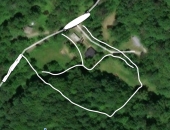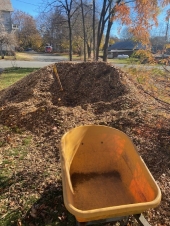






Kaarina Kreus wrote:My chicken house used to be the sauna bathouse. It has the hotroom and a dressing room. The hotroom can be heated, but the dressing room cannot. Thus there is a thick substrate in the dressing room, which I am at pains to get composting.
The substrate has all the poop produced by the flock of 25 and I have mixed it occasionally with a fork. It has smelled wonderful all the time, which in itself is a great thing. But it just does not heat up.
I may have overdone the amount of hay: I bring in new hay from the adjoining field every day. If that is the case, what would correct it? Humanure?
I covered the substrate with spruce cuttings in an attempt to "put a lid" on it. No idea if that was wise.
The waether forecast for the upcoming 10 dayd promises below zero Fahrenheit. I would really need the extra heat.


Jay Angler wrote:Has anyone had experience with French Sorrel and/or Swiss Chard and chickens? Both have Oxalic acid in them and both grow *really* well in my climate.
I've been giving some of the girls the French Sorrel once a week or so, and on a per/bird basis, not very much. I'm not sure that it's growing faster than the kale, or only appears to be because I've been hesitant to give them very much of it. They don't object, but I don't want to overwork their little kidneys!
However, it's in a different family, and Cole family crops can get Root-Knot Nematode if you grow too much of it or for too long in one area. That's really easy to do with kale/cabbage as it self seeds, loves my climate, I've got a couple of plants that are about 5 years old, and the birds adore it.
My climate isn't good for drying summer greens as winter feed as we're so damp year round. I'm really looking for more winter greens that aren't in the Cole family.